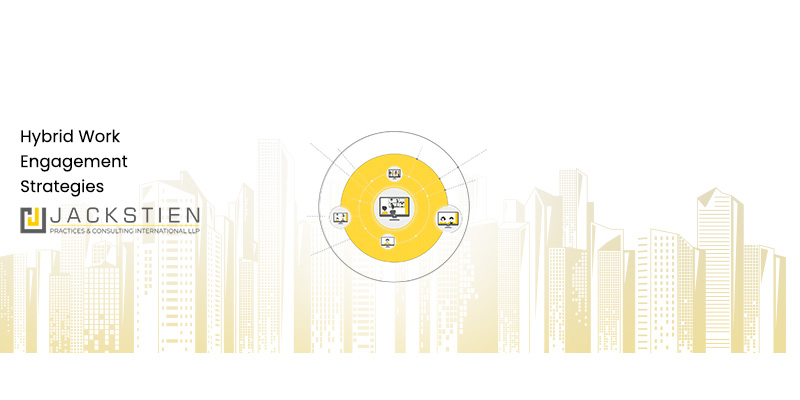…we continue the discussion (earlier blogs here and here) on the relationship between the new work models of remote and hybrid work, carbon footprint, and the environment as a whole.
Remote and hybrid work necessitates changes to the way processes are risk managed and structured. This is something we do often. Our work has some extremely fortunate side-effects (at times, equally or more valuable than our immediate goals for our clients).
Today we explore the impact of these changes driven by process risk management on the carbon footprint (not just the reduction in carbon footprint but a reversal in the footprint from reduced deforestation).
Remote and hybrid work lies and builds on the foundation of digitalization and brings to life a digital-first or digital-only shift where companies look to automate their workflows and build the next generation of processes that better service their customers while enabling their employees to work from anywhere.
Digitization for remote and hybrid work requires the data itself to be digitally native (i.e. to be created, used, stored and/or destroyed digitally). Paper should not be a part of the picture.
Date originates, contributes and archives digitally without ever being turned into a non-electronic medium (such as paper). Remote and hybrid work cannot function nor be risk managed without true digitization. To be sure, digitization is much more than the ‘scan-and-email’ of information that resides on paper. So much more.
So let’s look at the intricate impact of just one benefit of true digitization for remote and hybrid work – no paper.
Carbon Footprint – From Paper But Not Just On Paper:
Companies and their workplaces use a lot of paper. According to the U.S Environmental Protection Agency, schools and offices use printing and writing paper which makes up for the biggest contribution to paper consumption. Statistics tell us that an average office worker uses up to 10,000 sheets of paper every year, and about 45 per cent of paper printed every day in an office is thrown away at the end of the day.
The carbon footprint of paper is very large, especially because every stage in the life-cycle of a piece of paper causes carbon emissions. From sourcing, pulping, transport and use and disposal, paper leaves behind a long, heavy and burdensome carbon trail
With remote work and digitalization, there will be a significantly reduced usage of paper by companies and their employees. Reduced usage directly means lesser demand, lesser production and minimized harm to the environment.
Lowered Use of Tools and Services Related To Paper:
The usage of paper in companies requires tools like shredders, toners and printers regularly. In an office environment, the process of printing numerous copies, memos and instruction manuals is standard.
Apart from that, courier services play a large role in sending and delivering files and folders across office branches and employees’ addresses. Courier services and the involved commute spike the carbon footprint. With remote and hybrid work there is no central place to courier to and the basic requirement is for everyone to be able to view information digitally on their devices.
As remote work and true digitalization require a reduced usage of paper, there will be a decline in the application of tools related to paper as well. Devices like printers contribute to electronic waste and if not recycled properly, pose harm to the soil, groundwater and marine life.
Research shows that about 66 per cent of last mile emissions are connected to six e-commerce and parcel delivery services and businesses. If remote work is to bring a reduction in official couriers sent and delivered to employees, there is bound to be a direct decrease in the commuting footprint of the same.
With lesser usage and production of electric and plastic equipment and services for paper in offices, there will be reduced carbon emissions and footprint. Additionally, every office space will contribute significantly less to waste generation.
Reduction in Metals and Mining:
Offices and workplaces use stationery for using, binding, separating, and transporting, (files, pens, markers, staplers, punches, boxes, indexes, separators, lamination). Most if not all of these things are made up of plastic, metal, or simply, more paper.
In addition, heavy metal and fabrication costs are expended on archiving, storing and protecting paper for the long-term against theft, water and fire, Thousands of tons of metal go into the construction of the same. Also, there is a long carbon footprint of the transportation of the metals to the urban areas because trucks and vans that are utilized for this purpose run on fossil fuels.
With remote and hybrid work and the digital transformation that has come with it, the need for excessive stationery tools and storage spaces is significantly lowered, with companies and governments using cloud storage to store information and data which is a fraction of the carbon footprint. In turn, there is a direct decrease in deforestation, paper production, metal mining, and carbon emissions. Further, reduced deforestation has an incremental impact by not adding carbon but absorbing it.
ABOUT THE AUTHOR
A senior banker from the complex global markets space, Mr. Nishant Shah has worked for more than two decades across Citibank, Standard Chartered and JPMorgan Chase before taking over as our Managing Partner. Passionate with word and pen about finance, technology, macroeconomics and future trends, he is a Chartered Accountant by education and the winner of various prestigious awards during his career, including the ‘India Awards for Excellence’.


